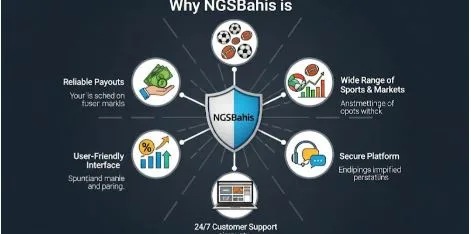Your Financial Command Center: Mastering the Art of the Modern Personal Checking Account
In the intricate tapestry of personal finance, one element stands out as the fundamental cornerstone for managing your daily monetary affairs: the personal checking account. Far more than just a place to hold your money, it’s the operational hub from which bills are paid, income is received, and everyday transactions are effortlessly facilitated. Understanding its nuances and leveraging its full potential can be the difference between financial chaos and serene fiscal control. For those embarking on their financial journey or seeking to optimize their existing setup, exploring robust and reliable options is paramount to ensuring smooth sailing in the often-turbulent waters of modern money management.
The Bedrock of Daily Transactions
At its core, a personal checking account is designed for frequent deposits and withdrawals, making it the ideal conduit for your regular financial activities. Unlike savings accounts, which are typically geared towards long-term growth and may have withdrawal limitations, checking accounts prioritize accessibility and transactional ease. This fundamental difference makes them indispensable for almost everyone.
Imagine a life without the convenience of a checking account. You’d be dealing with physical cash for every purchase, waiting for checks to clear manually, and managing a dizzying array of paper statements. The modern personal checking account streamlines all of this, transforming what was once a laborious process into a few clicks or swipes.
Key Features That Define a Checking Account
While specific offerings vary between financial institutions, most personal checking accounts share a common set of features that underpin their utility. These features are designed to provide both convenience and security for your money.
- Debit Cards: Directly linked to your account, debit cards allow for instantaneous purchases, both online and in-store, and provide access to ATMs for cash withdrawals. They eliminate the need to carry large sums of cash and offer a digital record of your spending.
- Online and Mobile Banking: The advent of digital platforms has revolutionized banking. These services allow you to monitor your balance, transfer funds, pay bills, and even deposit checks remotely, all from the comfort of your home or on the go.
- Bill Pay Services: Many checking accounts offer integrated bill pay features, allowing you to schedule one-time or recurring payments to various merchants and service providers. This helps avoid late fees and simplifies your monthly financial obligations.
- Direct Deposit: A highly convenient feature, direct deposit enables employers or government agencies to deposit funds directly into your account, eliminating the need for paper checks and ensuring quicker access to your money.
- Overdraft Protection: While ideally avoided, overdraft protection services can link your checking account to a savings account or line of credit, preventing transactions from being declined if your balance falls below zero. Fees may apply, so understanding the terms is crucial.
- ATM Access: Extensive ATM networks provide convenient access to your cash, allowing you to withdraw funds or check balances at numerous locations.
Decoding Different Types of Checking Accounts
The landscape of personal checking accounts is more diverse than many realize, with various types tailored to different needs and financial habits. Understanding these distinctions can help you select an account that aligns perfectly with your lifestyle.
- Standard Checking Accounts: These are the most common type, offering fundamental services with varying fee structures. Some may have monthly maintenance fees that can be waived by meeting certain criteria, such as maintaining a minimum balance or setting up direct deposit.
- Interest-Bearing Checking Accounts: While the primary purpose of a checking account isn’t to earn interest, some accounts do offer a modest interest rate on your balance. These often come with higher minimum balance requirements or other conditions.
- Free Checking Accounts: As the name suggests, these accounts typically have no monthly maintenance fees, though they might have other charges for specific services like out-of-network ATM withdrawals or paper statements. They are a popular choice for those seeking to minimize banking costs.
- Student Checking Accounts: Designed with the younger demographic in mind, these accounts often waive fees, offer lower minimum balance requirements, and may include perks relevant to students, such as discounts or specific debit card designs.
- Senior Checking Accounts: Tailored for older individuals, these accounts often provide benefits like waived fees, free checks, and sometimes even higher interest rates or personalized customer service.
- Premium or Relationship Checking Accounts: For customers with higher balances or multiple accounts with the same institution (e.g., savings, investments, loans), premium checking accounts offer enhanced benefits, such as higher interest rates, reduced fees, and exclusive services.
Navigating the Fee Landscape
One of the most critical aspects of choosing a personal checking account is understanding its fee structure. Fees can erode your balance and negate any perceived benefits if not managed carefully.
Here are common fees to watch out for:
- Monthly Maintenance Fees: A recurring charge that can often be waived by meeting specific requirements like direct deposit, minimum balance, or a certain number of debit card transactions.
- ATM Fees: Charges incurred when using an out-of-network ATM. Your bank may charge a fee, and the ATM owner might charge a separate surcharge.
- Overdraft Fees: Levied when a transaction exceeds your available balance and the bank pays it, covering the difference. These can be substantial and add up quickly.
- Non-Sufficient Funds (NSF) Fees: Charged when a transaction is attempted but there aren’t enough funds in your account, and the bank declines the transaction.
- Wire Transfer Fees: Fees for sending or receiving money via wire transfer, which is a faster but more expensive way to move funds than electronic transfers.
- Stop Payment Fees: A charge for placing a stop payment order on a check you’ve written but no longer want to be cashed.
- Paper Statement Fees: Some banks charge for sending physical paper statements, encouraging customers to opt for electronic statements instead.
Beyond the Basics: Advanced Considerations
While the core functionality of a checking account is clear, there are several advanced considerations that can significantly impact your banking experience and financial well-being.
- FDIC Insurance: Always ensure your checking account is held at an FDIC-insured institution. This means your deposits are protected by the U.S. government up to at least $250,000 per depositor, per insured bank, for each account ownership category, providing peace of mind.
- Security Measures: Look for banks that employ robust security protocols, including encryption, multi-factor authentication, and fraud monitoring, to protect your personal and financial information from cyber threats.
- Customer Service: Assess the bank’s customer service reputation. Do they offer 24/7 support? Are they responsive and helpful? Good customer service can be invaluable when you encounter issues or have questions.
- Integration with Other Services: Consider how well the checking account integrates with other financial products you might need, such as savings accounts, credit cards, or investment platforms offered by the same institution. A unified platform can simplify your financial management.
- Mobile App Functionality: In today’s digital age, a user-friendly and feature-rich mobile app is crucial. Check for capabilities like mobile check deposit, peer-to-peer payments, budgeting tools, and real-time alerts.
Setting Up Your Personal Checking Account
Opening a personal checking account is a straightforward process, but it requires specific documentation to verify your identity and comply with financial regulations.
Here’s what you’ll typically need:
- Proof of Identity:
- Valid government-issued photo ID (e.g., driver’s license, passport, state ID).
- Social Security card or Individual Taxpayer Identification Number (ITIN).
- Proof of Address:
- Utility bill (electricity, water, gas).
- Lease agreement or mortgage statement.
- Mail from a government agency.
- Initial Deposit:
- Cash or a check to fund your new account. The minimum deposit requirement varies by bank and account type.
The process can often be completed online or in person at a branch. Online applications typically involve uploading digital copies of your documents and verifying your identity through secure channels.
Optimizing Your Checking Account Usage
Once you have a personal checking account, optimizing its use can help you manage your money more effectively and avoid unnecessary fees.
- Regularly Monitor Your Balance: Keep a close eye on your account balance through online banking or your mobile app to avoid overdrafts and track your spending.
- Set Up Alerts: Enable alerts for low balances, large transactions, or direct deposits to stay informed about your account activity.
- Reconcile Your Account: Periodically compare your bank statements with your own records (e.g., a budget spreadsheet or transaction log) to identify any discrepancies or unauthorized transactions.
- Understand Your Overdraft Options: If you occasionally overspend, understand your bank’s overdraft policies. Opting out of overdraft coverage for ATM withdrawals and one-time debit card purchases can prevent fees, though transactions will be declined. Linking to a savings account for overdraft protection is often a cheaper alternative.
- Utilize Budgeting Tools: Many banks offer integrated budgeting tools within their online banking platforms or mobile apps. Take advantage of these to categorize your spending and track your financial goals.
The Future of Checking
The personal checking account continues to evolve, driven by technological advancements and changing consumer expectations. We’re seeing increased integration with budgeting apps, artificial intelligence for personalized financial advice, and even blockchain-based solutions on the horizon. The emphasis is shifting towards more personalized experiences, real-time insights, and even greater security. Digital-only banks and neobanks are challenging traditional models, often offering streamlined experiences and competitive fee structures. As technology progresses, so too will the capabilities and conveniences associated with managing your everyday money.
Conclusion
The personal checking account is undeniably the backbone of modern financial management. From facilitating daily transactions to providing a secure vault for your income, its role is indispensable. By carefully selecting an account that aligns with your financial habits, understanding its features and fee structure, and proactively managing it, you empower yourself to achieve greater financial clarity and control. Take the time to explore your options, choose wisely, and harness the full power of this essential financial tool to build a more secure and prosperous future. For those interested in exploring different financial solutions and understanding the broader implications of their monetary decisions, delving deeper into financial literacy resources can provide invaluable insights.
FAQ’s
Q1: What is the main difference between a checking account and a savings account?
A1: A checking account is designed for frequent transactions, like paying bills and making daily purchases, offering high liquidity. A savings account is primarily for accumulating funds and earning interest, typically with fewer transactions allowed.
Q2: Are online-only checking accounts safe?
A2: Yes, online-only checking accounts are generally safe, provided they are offered by FDIC-insured institutions. They often employ advanced security measures, similar to traditional banks, and many provide a more streamlined user experience.
Q3: How can I avoid monthly maintenance fees on my checking account?
A3: Many banks waive monthly maintenance fees if you meet certain criteria, such as maintaining a minimum daily balance, setting up direct deposit, using your debit card a certain number of times per month, or having multiple accounts with the same institution.
Q4: What should I do if my debit card is lost or stolen?
A4: Immediately contact your bank to report the loss or theft. They will cancel your card and issue a new one. It’s also wise to review your account activity for any unauthorized transactions. Federal law limits your liability for unauthorized use if you report it promptly.
Q5: Can I open a checking account with bad credit?
A5: While traditional banks may be hesitant to open standard checking accounts for individuals with a history of overdrafts or unpaid fees, many institutions offer “second chance checking” accounts designed for those rebuilding their banking history. These accounts may have more fees or restrictions but can provide a pathway to a regular checking account.
Q6: What is an ATM surcharge?
A6: An ATM surcharge is a fee charged by the owner of an ATM (which may not be your bank) for using their machine. This is separate from any fee your own bank might charge for using an out-of-network ATM.
Q7: Is it possible to have more than one personal checking account?
A7: Yes, you can have multiple personal checking accounts, even with different banks. Some people choose to do this to separate funds for different purposes (e.g., a primary spending account and an account for specific bills).





